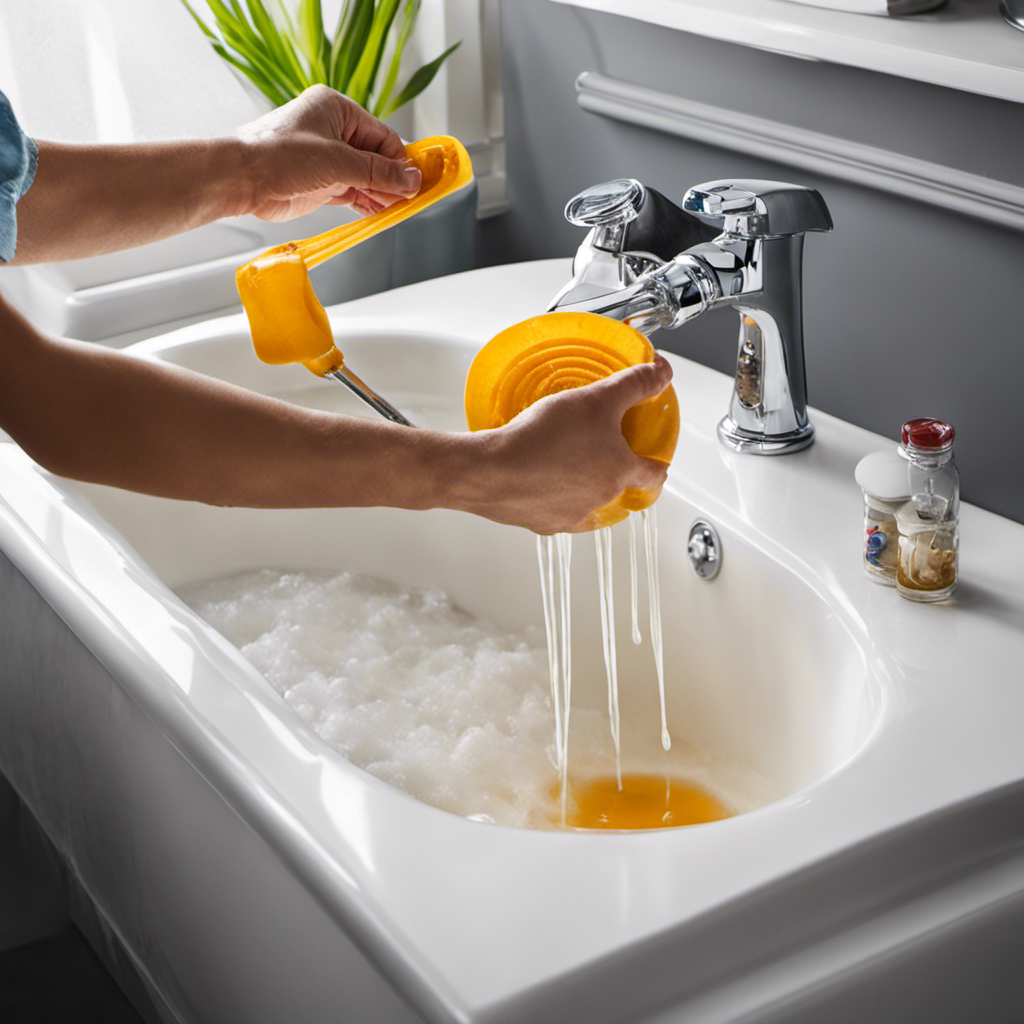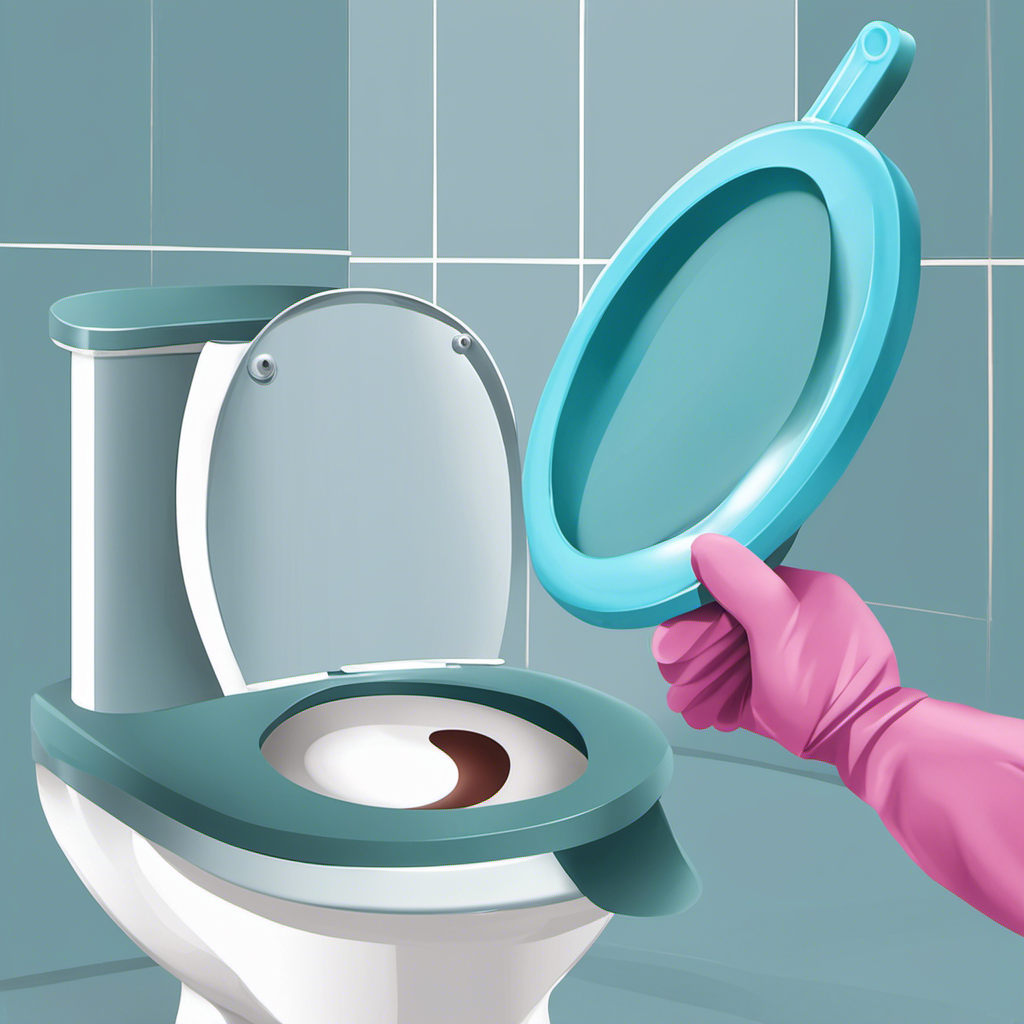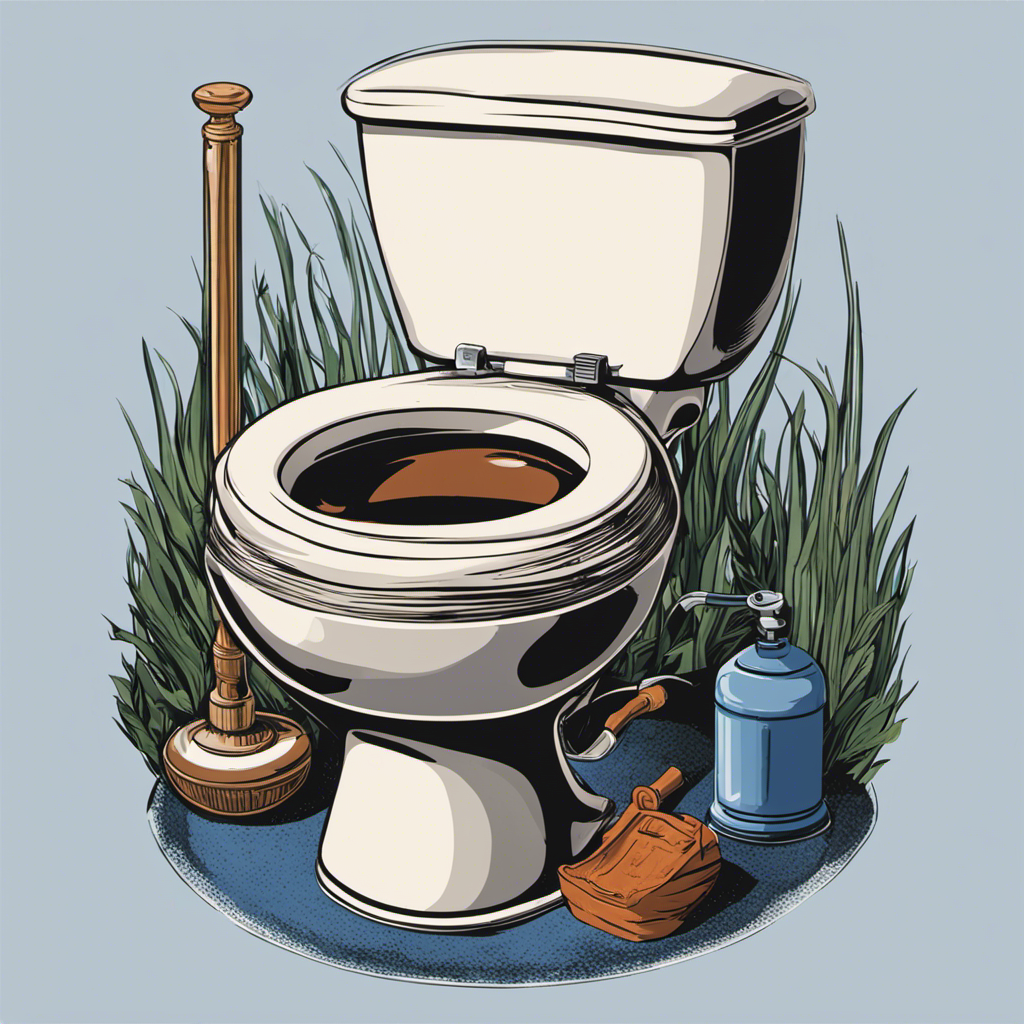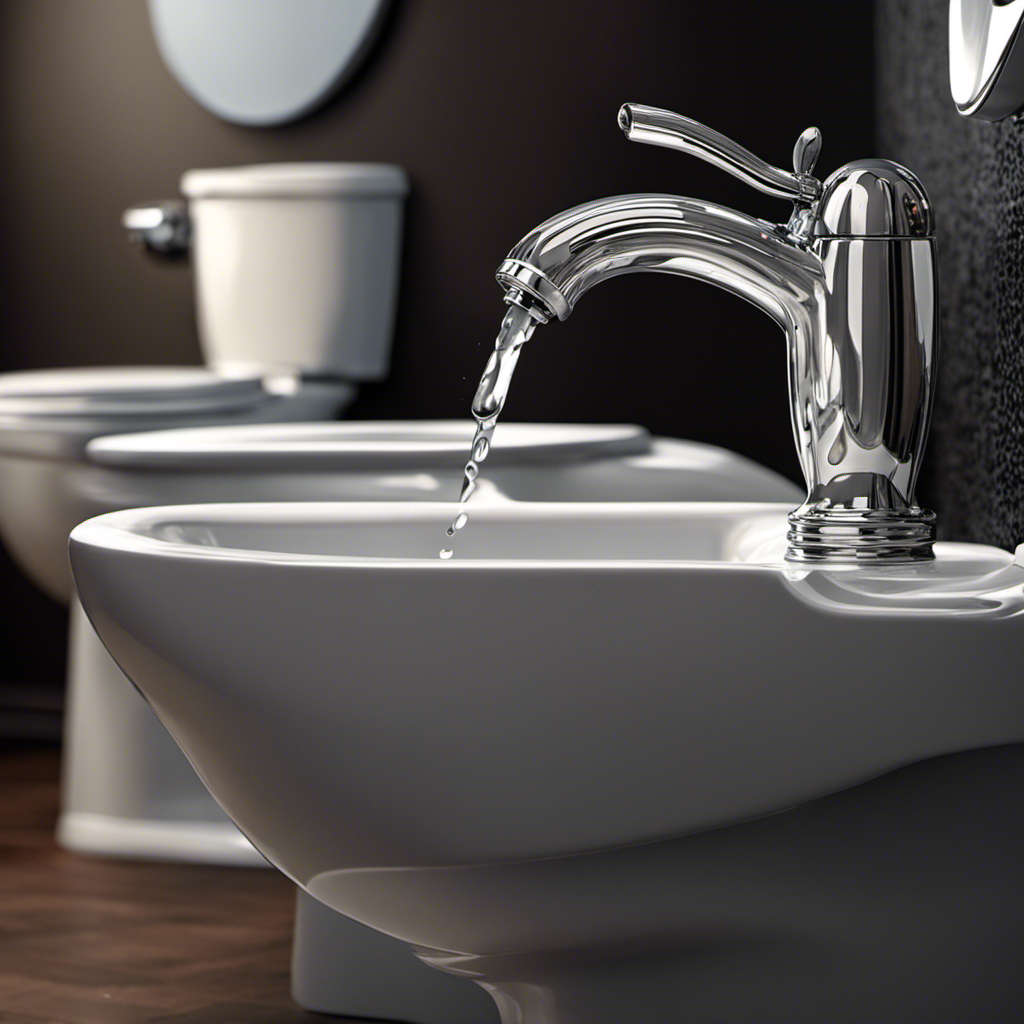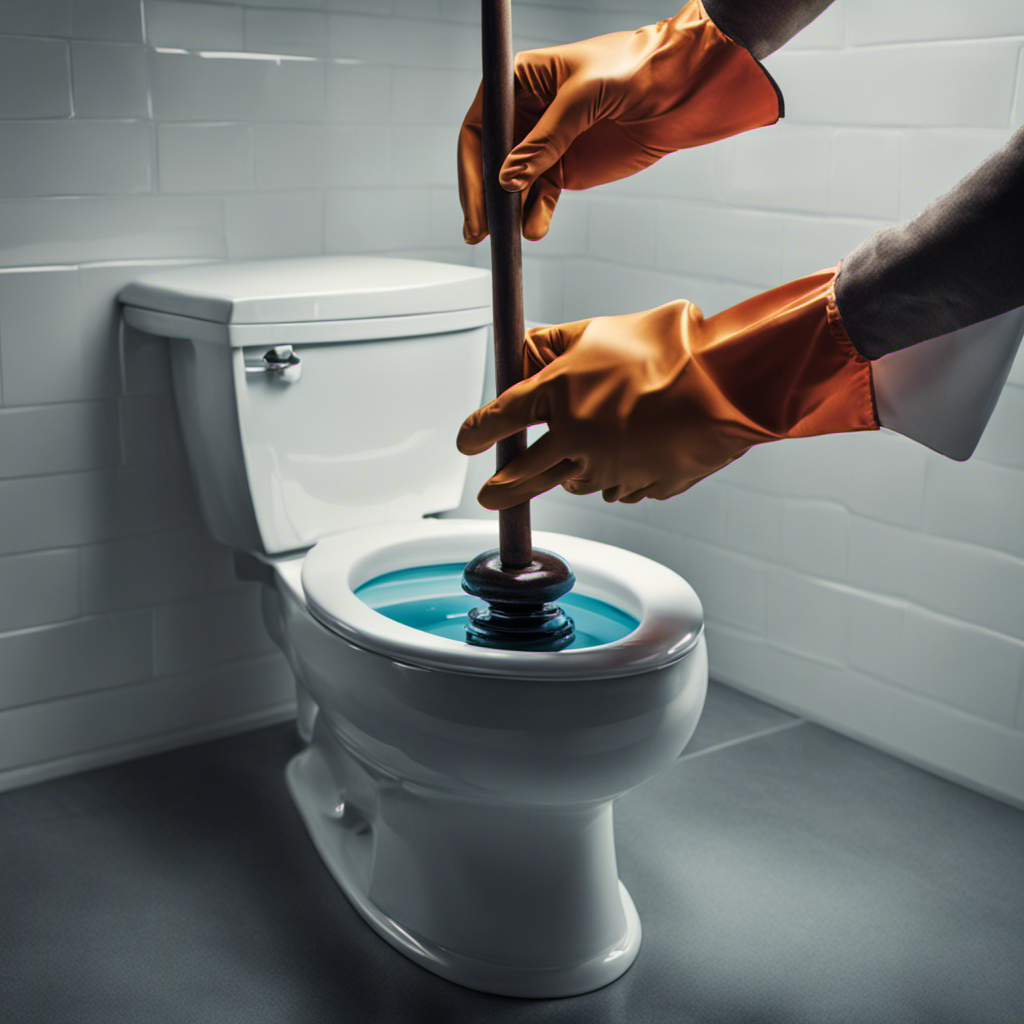Having a clogged bathtub drain can be a real pain in the neck, especially when the water refuses to drain. But fear not, because there are easy ways to tackle this pesky problem.
In this article, we will explore some tried and true methods to unclog a bathtub drain when water won’t budge. From using hot water and baking soda to employing a trusty plunger or drain snake, you’ll learn practical tips and tricks to get your drain flowing smoothly again.
So, let’s dive in and bid farewell to stubborn clogs!
Key Takeaways
- Inspect the bathtub stopper for any signs of being stuck or not functioning properly.
- Look for visible blockages such as small bath toys, sponges, or hair in the drain.
- Try using hot water and baking soda or a plunger to unclog the drain.
- If DIY methods fail, it is advisable to seek professional help from a plumber.
Identifying and Checking for Blockages
The homeowner should inspect the bathtub stopper to see if it is stuck or not functioning properly.
Common signs of a clogged bathtub drain include slow drainage, standing water in the tub, and unpleasant odors coming from the drain.
To prevent future drain clogs, it is important to regularly clean the bathtub stopper by removing any debris or hair that may have accumulated.
Additionally, using a hair catcher in the shower can help prevent hair from going down the drain and causing clogs.
Another preventive measure is to avoid pouring grease, oil, or other substances down the drain, as these can solidify and create blockages.
Tools Required for Unclogging
To unclog a bathtub, you will need tools such as baking soda, white vinegar, a funnel, a plunger, a rag, rubber gloves, drain cleaner, and a plumber’s snake. These tools are essential for effectively removing blockages and restoring proper drainage.
When using chemical drain cleaners, it’s important to take precautions to avoid any potential harm to yourself or your plumbing. Be sure to carefully read and follow the instructions provided by the manufacturer.
Additionally, it’s crucial to properly use a plunger when attempting to unclog a bathtub drain. Start by removing the overflow cover and sealing the hole tightly with a rag. Then, vigorously plunge the drain to dislodge the clog.
Method 1: Using Hot Water and Baking Soda
Using hot water and baking soda is a recommended method for unclogging a bathtub drain. This natural remedy offers several benefits when it comes to clearing drain blockages.
First and foremost, it is a safe option that does not involve the use of harsh chemicals which can potentially damage the plumbing system.
Additionally, hot water helps to dissolve and loosen the clog while baking soda acts as a natural abrasive that helps to break down the blockage.
When attempting this method, it is important to avoid common mistakes such as pouring boiling water directly onto porcelain surfaces, as it can cause them to crack.
It is also crucial to use enough baking soda and to follow up with a good amount of hot water to ensure the effectiveness of this method.
Method 2: Utilizing a Plunger
Utilizing a plunger involves removing the overflow cover, tightly sealing the hole with a rag, and vigorously plunging the drain to remove the clog.
When it comes to unclogging a bathtub drain, using a plunger can be an effective method. Here are the pros and cons of using a plunger for this task:
Pros:
- Cost-effective: Plungers are inexpensive and readily available.
- Easy to use: No special skills or training required.
- Versatile: Plungers can be used on various types of drains, not just bathtubs.
- Environmentally friendly: No chemicals or harsh substances are needed.
Cons:
- Limited effectiveness: Plungers may not work for severe or stubborn clogs.
- Messy: There is a possibility of water splashing out during the plunging process.
Before using a plunger, it’s crucial to properly seal the overflow hole to ensure maximum effectiveness. Here’s how to do it:
- Remove the overflow cover.
- Take a rag and tightly seal the hole by stuffing it into the opening.
- Ensure a tight seal to prevent air from escaping and to create proper suction.
Method 3: Using a Drain Snake or Auger
A drain snake or auger can physically remove blockages from the bathtub drain pipes. Using a drain snake or auger has several benefits when it comes to unclogging a bathtub drain.
First, it is a cost-effective solution that can save homeowners from expensive plumbing bills.
Second, it allows for a quick and efficient removal of the clog, restoring proper drainage in no time.
To properly use a drain snake or auger, start by inserting the snake or auger into the drain opening. Rotate the snake or auger clockwise while applying gentle pressure to break up the clog. Continue pushing and rotating until you feel the resistance lessen.
Once the blockage is cleared, remove the snake or auger and run hot water down the drain to ensure complete clearing of debris.
Using a drain snake or auger is a practical and effective way to unclog a bathtub drain.
Method 4: Considering Chemical Drain Cleaners
Chemical drain cleaners can be a quick and convenient option for unclogging a bathtub drain. However, it is important to consider the pros and cons before using them.
Pros of Chemical Drain Cleaners:
- Easy to use: Chemical drain cleaners usually come in ready-to-use bottles, making them simple to apply.
- Quick results: These cleaners can dissolve hair, grease, and other clogs within minutes, allowing the water to flow freely again.
Cons of Chemical Drain Cleaners:
- Harsh chemicals: The strong chemicals in drain cleaners can be harmful to both the environment and your plumbing system.
- Potential damage: Continuous use of chemical drain cleaners can corrode and damage pipes over time.
Alternatives to Chemical Drain Cleaners:
- Baking soda and vinegar: This natural combination can create a chemical reaction that helps break down clogs.
- Plunger or drain snake: These tools are effective in physically removing blockages from the drain without the use of chemicals.
When deciding whether to use chemical drain cleaners, it is important to weigh the pros and cons and consider alternative methods that are safer for your plumbing system.
Causes of a Clogged Bathtub Drain
Long hair from household members or pet bathing can quickly cause a bathtub drain to become clogged. It is important to be aware of the common signs of a clogged bathtub drain, which include slow draining water, standing water in the tub, and a foul odor coming from the drain.
To prevent future drain clogs, there are a few simple steps you can take. First, consider using a hair catcher in the shower to catch any loose hair before it goes down the drain. Additionally, regularly cleaning the drain with a mixture of baking soda and vinegar can help prevent build-up.
Prevention Tips for Future Drain Clogs
Regularly cleaning the drain with a mixture of baking soda and vinegar can help prevent build-up and keep the bathtub drain clear. Here are some tips for maintaining a clean bathtub drain and preventing future clogs:
- Use a hair catcher in the shower to prevent hair from going down the drain.
- Avoid pouring grease, oil, and food particles down the drain.
- Flush the drain with hot water after each use to help remove any residue.
Once a month, pour a mixture of baking soda and vinegar down the drain and let it sit for about 30 minutes before flushing with hot water. Avoid using chemical drain cleaners as they can be harmful to your plumbing and the environment.
When to Call a Professional Plumber
If all attempts to unclog the drain fail, it is advisable to seek professional help from a plumber.
Signs of a severe drain blockage include water backing up or not draining at all, foul odors coming from the drain, and gurgling sounds when water is running.
When faced with a stubborn clog, it’s important to avoid common mistakes that can worsen the problem.
One common mistake is using chemical drain cleaners excessively or incorrectly, as they can damage pipes and worsen the clog.
Another mistake is forcefully plunging the drain without removing the overflow cover, which can result in ineffective plunging.
Additionally, using a plumber’s snake or auger without proper guidance can cause damage to the pipes.
Additional Tips and Tricks for Unclogging a Bathtub Drain
To effectively remove stubborn blockages from a bathtub drain, homeowners can try using a combination of hot water, baking soda, and vinegar to create a fizzy reaction that helps loosen and remove the clog. This method is a popular and effective unclogging technique that can be easily done at home.
However, there are common mistakes that people often make when attempting to unclog their bathtub drains. It is important to avoid using chemical drain cleaners as they can be harmful to the plumbing system and the environment. Additionally, using excessive force with a plunger or a drain snake can cause damage to the pipes.
It is also crucial to regularly clean and maintain the drains to prevent clogs from occurring in the first place. By following these unclogging techniques and avoiding common mistakes, homeowners can successfully unclog their bathtub drains and keep the plumbing system running smoothly.
Frequently Asked Questions
Can I Use a Wire Hanger as a Substitute for a Plumber’s Snake to Remove Blockages From the Drain?
Yes, a wire hanger can be used as a substitute for a plumber’s snake to remove blockages from a drain. It is a practical and effective alternative tool for unclogging drains.
Is It Safe to Use Chemical Drain Cleaners on a Regular Basis to Prevent Future Drain Clogs?
Using chemical drain cleaners for regular maintenance has pros and cons. They can effectively dissolve clogs, but may damage pipes over time. Proper disposal is crucial to protect the environment. Seek professional advice for safer alternatives.
What Should I Do if the Bathtub Drain Is Still Clogged After Attempting All the Unclogging Methods Mentioned in the Article?
If the bathtub drain remains clogged after attempting all the mentioned unclogging methods, alternative solutions should be considered. It may be necessary to seek professional help from a plumber who can resolve the issue effectively and efficiently.
Can I Use a Combination of the Unclogging Methods to Increase the Chances of Successfully Clearing the Drain?
Yes, combining unclogging methods can increase the chances of successfully clearing a clogged bathtub drain. Using household items like baking soda, vinegar, a plunger, or a drain snake can help remove stubborn clogs.
Are There Any Natural Alternatives to Chemical Drain Cleaners That I Can Use to Prevent Future Drain Clogs?
To maintain a clog-free drain without harsh chemicals, there are natural alternatives to chemical drain cleaners. These methods are effective and safer for the environment. Let’s explore some of these options.
Conclusion
In conclusion, unclogging a bathtub drain can be a frustrating endeavor, but fear not! With these easy methods, you’ll be able to conquer any stubborn blockage.
Remember, hot water and baking soda can work wonders, creating a fizzy reaction that helps break down the clog.
Don’t underestimate the power of a plunger, and if all else fails, a drain snake or auger can save the day.
Just be sure to take preventative measures, like using a hair catcher, to avoid future clogs.
And if things get out of hand, don’t hesitate to call a professional plumber.
Happy unclogging!
